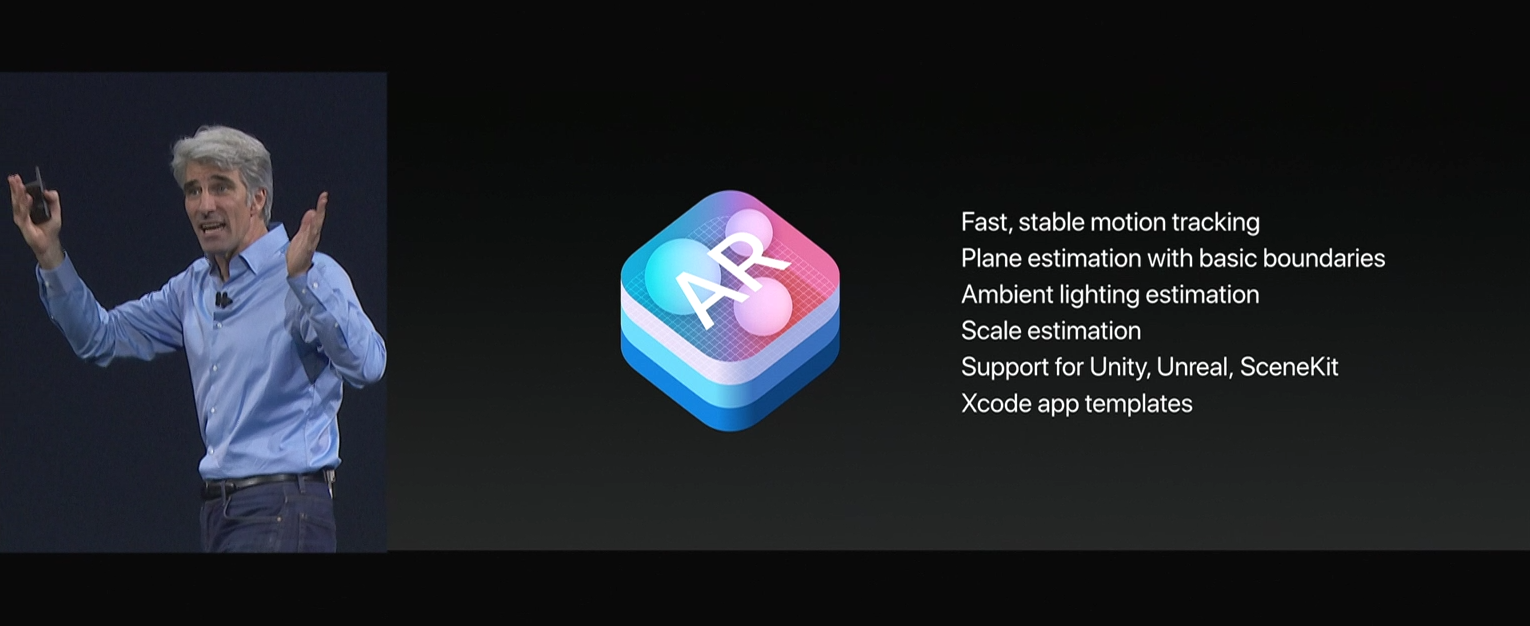Today at WWDC Apple announced a slew of updates across its many product lines. Among these announcements were a few eyebrow raising nods toward immersive tech upgrades and how they can help improve popular applications such as Pokemon GO.
In addition to showing an HTC Vive finally being powered by an Apple computer, the company also showed off a new slate of developer tools that can help programmers integrate one of Silicon Valley’s hottest buzzwords more fully into the iPhone: augmented reality.
AR has been the talk of the town at recent major keynotes from Apple’s big-tech competitors like Google and Facebook. The consensus is that we are still 5-10 years away from the stylish, powerful AR glasses of tomorrow, and so the focus for the space right now is on what can be achieved in this space using just our mobile phones. To that end, Apple unveiled ARKit at WWDC.
ARKit is an early developer toolkit that provides tools that unlock the iPhone’s AR potential. Surface detection and other SLAM/computer vision capabilities were demonstrated on stage and one of the use cases where these will be most useful is in entertainment apps such as Pokemon GO.
Pokemon GO was an absolute revolution when it released almost a year ago. People around the world were gathering in giant groups to hunt down and capture these digital pocket monsters that were geographically anchored and represented using very limited AR on their mobile phones. The phone camera could display creatures when you got close enough to them but that representation was lacking. The Pokemon would just sort of float in midair. Some clever angling could make it appear as if they were standing on a rock or the ground in front of you, but nothing technological was driving this sort of realism.
[gfycat data_id=”GoldenMadFerret”]
With AR Kit, however, Apple was able to demonstrate a Pokemon GO demo that featured a character anchored to the ground as it was being detected by the phone itself. The Pokeball would also ricochet and bounce off the ground realistically.
Now, instead of animations being overlaid on a real world background, developers like Niantic can create AR experiences for the smartphone that interact with reality, rather than simply using it as a backdrop.



























